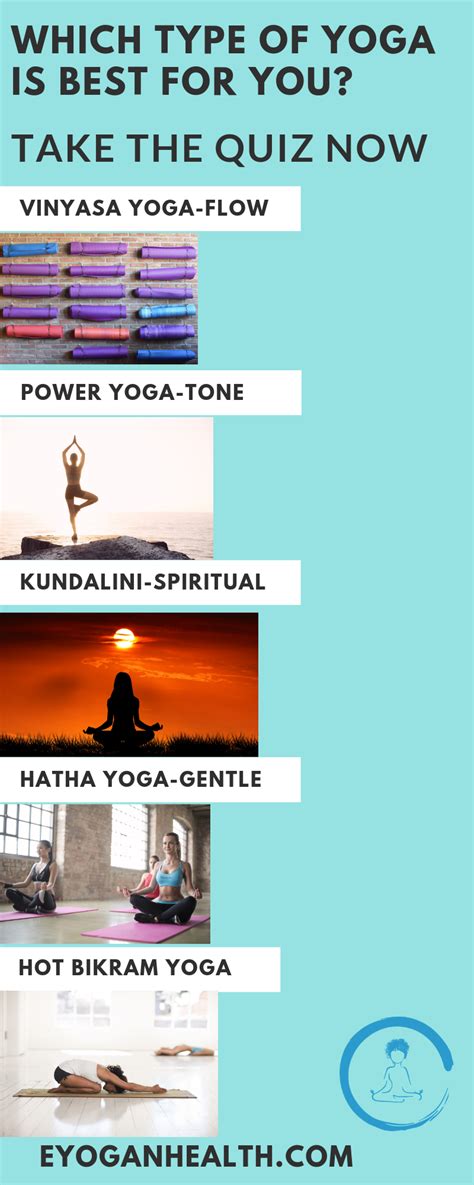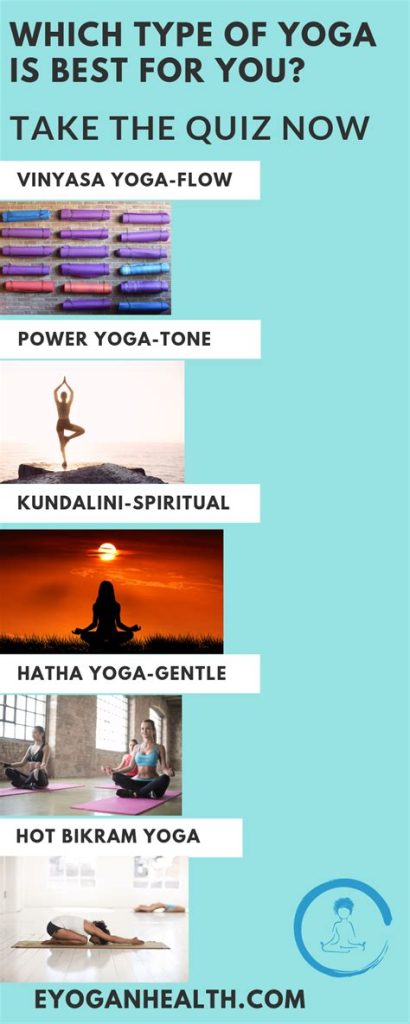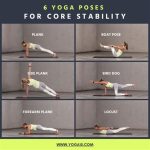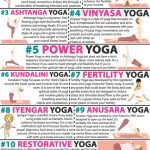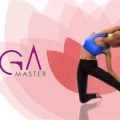Comparing Yoga Types by Intensity: A Complete Guide for Practitioners
Yoga has evolved into various styles that cater to different needs and fitness levels. Whether you’re looking for an intense physical challenge or a more meditative, gentle practice, there’s a type of yoga that fits your goals. This guide ranks popular yoga types based on their intensity levels—from mild to intense—and provides insights into their key benefits, techniques, and who they’re best suited for.
Introduction: Navigating the Yoga Spectrum
The diversity in yoga practices can be overwhelming, especially for beginners. Yoga types range from highly vigorous, demanding styles that test strength and endurance, to softer, slower-paced forms that focus on mindfulness and flexibility. This article organizes and explains the intensity of various yoga types while keeping in mind accessibility, fitness levels, and personal goals.
Key Concepts
- Intensity: Refers to the physical exertion required in a given yoga practice. Higher-intensity types generally focus on strength, stamina, and cardiovascular endurance.
- Flow: The seamless transition between poses in certain yoga styles, which can increase the overall physical and mental demand of the practice.
- Breathwork (Pranayama): A fundamental component across all types of yoga that influences both the intensity and meditative aspects of the practice.
Historical Context: Yoga’s Evolution Across Intensity Levels
Yoga originated in India more than 5,000 years ago and was primarily practiced as a means of spiritual growth. Over the centuries, it has expanded to include more physically demanding forms. The earliest forms of yoga, like Hatha Yoga, were centered on asana (posture) and breath control, but more modern, dynamic practices such as Vinyasa and Ashtanga have emerged, focusing on intensity and fitness. Understanding this historical development helps practitioners appreciate the wide range of experiences that yoga can offer today.
Current State Analysis: The Popularity of Yoga Types Today
Modern yoga offers various options, and practitioners often select styles based on their personal fitness goals. Here’s a breakdown of the most popular yoga styles in practice today, arranged by their intensity:
| Yoga Type | Intensity Level | Key Focus | Ideal For |
|---|---|---|---|
| Hatha Yoga | Low | Gentle postures, mindfulness, breathing | Beginners, relaxation, low-intensity exercise |
| Yin Yoga | Low | Flexibility, long holds, mindfulness | Recovery, deep relaxation, stress relief |
| Restorative Yoga | Very Low | Complete relaxation, healing, meditative | People recovering from injuries, extreme relaxation |
| Iyengar Yoga | Moderate | Precise alignment, use of props, static poses | People with physical limitations, those seeking posture improvement |
| Vinyasa Yoga | Moderate to High | Fluid sequences, coordination with breath | Those looking for a cardio workout, intermediate to advanced practitioners |
| Ashtanga Yoga | High | Rigorous sequence, strength and flexibility | Advanced practitioners, those seeking discipline |
| Power Yoga | High | Strength, endurance, cardiovascular fitness | People looking for a gym-style workout |
| Bikram Yoga | High | 26 poses in a heated room | Those seeking intense sweating, detoxification |
| Hot Yoga | High | Various sequences in heated environments | People who enjoy high heat and intense physical challenges |
| Kundalini Yoga | Moderate | Energy awakening, chanting, spiritual practices | Practitioners seeking a mix of spiritual and physical practice |
Practical Applications: Choosing the Right Yoga Style
Choosing a yoga style depends on your personal goals, fitness level, and how much physical intensity you want to incorporate. Below are examples of when different types of yoga are particularly useful:
- Low-Intensity Yoga (Hatha, Yin, Restorative): Ideal for stress management, improving flexibility, and gentle rehabilitation. These practices also promote mindfulness and breathwork for mental clarity.
- Moderate-Intensity Yoga (Iyengar, Kundalini): Focuses on postural alignment and building internal awareness. These types are great for intermediate-level practitioners who want to combine physical and spiritual elements.
- High-Intensity Yoga (Vinyasa, Ashtanga, Power): Perfect for fitness enthusiasts looking for strength-building, endurance, and cardiovascular benefits. High-intensity types also promote better coordination and balance.
Case Studies: Experiences of Yoga Practitioners
Understanding real-life applications of yoga types can help illustrate how different styles suit varying needs. Here are case studies that highlight specific experiences:
- Athlete Rehabilitation (Yin Yoga): John, a professional runner recovering from a knee injury, turned to Yin Yoga to improve flexibility and promote joint recovery. His physical therapist recommended it because of its low-intensity focus on deep stretches.
- Weight Loss (Bikram Yoga): Anna, a 35-year-old office worker, decided to try Bikram Yoga for weight loss. The combination of heat and intense poses helped her shed 15 pounds over six months, while also increasing her stamina.
- Stress Relief (Hatha Yoga): Sara, a college student experiencing anxiety, found solace in Hatha Yoga. The slower pace allowed her to focus on breathing techniques that reduced her stress levels.
Stakeholder Analysis: Who Benefits from Each Yoga Type?
| Yoga Type | Primary Beneficiaries |
|---|---|
| Hatha Yoga | Beginners, people looking for low-intensity exercise |
| Vinyasa Yoga | Fitness enthusiasts, individuals seeking a cardio challenge |
| Restorative Yoga | Injury recovery patients, those looking for deep relaxation |
| Ashtanga Yoga | Advanced practitioners, disciplined yogis |
| Kundalini Yoga | Spiritual seekers, people interested in meditation and energy work |
| Bikram Yoga | People who enjoy extreme physical exertion and detox |
Implementation Guidelines: Adapting Yoga Intensity to Your Routine
To incorporate the right level of intensity into your yoga practice, follow these guidelines:
- Assess Your Fitness Level: Start by considering your current physical condition. Beginners should begin with low-intensity types such as Hatha or Yin Yoga.
- Set Clear Goals: Whether you’re aiming for stress relief, strength, or flexibility, knowing your goals will guide your choice of yoga style.
- Progress Gradually: Start with lower-intensity yoga types and move up to more demanding styles such as Vinyasa or Ashtanga as your fitness improves.
- Listen to Your Body: If you’re trying a new form of high-intensity yoga, take breaks as needed to avoid burnout or injury.
Ethical Considerations: Commercialization vs. Traditional Values
The rise in popularity of yoga has led to its commercialization, raising concerns among traditionalists. Some argue that styles like Power Yoga and Bikram Yoga distort yoga’s original intent, focusing more on physical intensity than on the mental and spiritual aspects. Balancing modern fitness goals with the ethical roots of yoga is essential to maintaining its integrity as both a physical and spiritual discipline.
Limitations and Future Research
While we’ve examined the most popular forms of yoga based on intensity, new styles continue to emerge. Future research could explore hybrid forms of yoga and their effectiveness for specific populations, such as athletes or individuals with chronic conditions. Moreover, research into the psychological benefits of intense yoga styles could provide a more complete picture of their overall impact on health and well-being.
Expert Commentary: Balancing Yoga’s Physical and Spiritual Benefits
Yoga remains a versatile practice that offers something for everyone. Whether you seek intense physical conditioning or a peaceful, meditative practice, there is a yoga style that meets your needs. However, practitioners should approach yoga holistically, respecting both the physical and spiritual dimensions that define its long-standing tradition.
Choosing the Best Yoga Style Based on Your Personality: A Personalized Guide
Yoga is a versatile practice with numerous styles, each offering different benefits. But how do you choose the right style for you? One effective way to decide is by aligning your yoga practice with your personality. Whether you crave intensity, calmness, spiritual connection, or physical challenge, there’s a yoga style perfectly suited to your preferences and needs. In this article, we’ll explore how to match your personality traits with the ideal yoga practice to foster balance, well-being, and personal growth.
Key Concepts
To understand how to choose the best yoga style for your personality, it’s essential to grasp some fundamental concepts:
- Personality Types: Personality traits shape your preferences in various areas of life, including exercise. Consider whether you are introverted or extroverted, high-energy or reflective, results-driven or process-focused.
- Yoga Styles: Yoga has numerous forms, each with unique approaches and benefits. Understanding the primary differences can help narrow down your choices.
- Mind-Body Connection: Different yoga styles emphasize the connection between mental and physical health in distinct ways. Your personality type might favor one approach over another.
Historical Context
Yoga originated over 5,000 years ago in India as a spiritual discipline aimed at uniting the mind, body, and soul. Its practice has evolved over centuries, branching into various styles that address different goals—from physical fitness to spiritual enlightenment. Understanding the historical roots of yoga helps highlight why each style serves a different purpose. For instance, Ashtanga Yoga, which emphasizes strict, energetic flows, originated from a need for discipline and purification in both body and mind. Conversely, Hatha Yoga, a slower and more meditative form, emerged to provide balance and harmony.
Current State Analysis
Today, yoga has exploded in popularity across the globe, with numerous styles tailored to different physical and psychological goals. Choosing a yoga style has become a more personalized experience, often driven by one’s fitness goals, lifestyle, and personality. With over 20 widely practiced styles, ranging from the intensity of Power Yoga to the tranquility of Restorative Yoga, the options can be overwhelming. However, aligning your practice with your personality can greatly enhance the effectiveness and enjoyment of your yoga journey.
Practical Applications
Let’s break down specific personality traits and recommend the most suitable yoga styles for each:
| Personality Trait | Recommended Yoga Style | Why It Works |
|---|---|---|
| Adventurous, Thrill-Seeking | Ashtanga, Power Yoga | These styles offer a physically challenging, fast-paced experience that satisfies your desire for action and intensity. |
| Calm, Reflective | Yin Yoga, Restorative Yoga | Slower styles that focus on meditation and holding poses for longer periods can help you deepen your introspection. |
| Highly Spiritual | Kundalini Yoga, Bhakti Yoga | These styles emphasize spiritual awakening and inner transformation, perfect for those seeking a deeper connection to the self and the universe. |
| Goal-Oriented, Ambitious | Bikram Yoga, Vinyasa Yoga | These styles are structured and disciplined, appealing to your desire for measurable progress and achievements. |
| Social, Extroverted | AcroYoga, Group Vinyasa Classes | Partner or group-based yoga practices encourage interaction and connection with others, matching your sociable nature. |
| Introspective, Sensitive | Iyengar Yoga, Hatha Yoga | Precise alignment and attention to detail in these styles allow you to focus deeply on your inner world and bodily awareness. |
| Energy-Focused, Dynamic | Power Yoga, Ashtanga Yoga | High-energy styles offer a challenging and dynamic physical experience that satisfies your need for movement and vigor. |
| Physically Focused, Athletic | Hot Yoga, Rocket Yoga | These physically demanding styles suit those looking to push their bodies and improve their physical fitness. |
| Creative, Free-Spirited | Vinyasa Flow, Jivamukti Yoga | These more fluid and expressive styles encourage creativity and exploration, allowing you to move in harmony with your inner state. |
Case Studies
Let’s explore how individuals with different personality traits have benefited from matching their yoga practice to their inner nature:
- Case Study 1: Maria, an ambitious marketing executive, initially struggled with her yoga practice because she was drawn to slower, meditative forms of yoga like Yin Yoga. After switching to a structured and goal-oriented style like Bikram Yoga, she found her practice more fulfilling and aligned with her results-driven nature.
- Case Study 2: Jason, an introverted artist, enjoyed the calm and meditative aspects of yoga but was overwhelmed in group classes. He began practicing Hatha Yoga alone at home, which allowed him to develop his practice at his own pace in a peaceful, solitary environment.
Stakeholder Analysis
In this context, stakeholders include yoga instructors, practitioners, wellness communities, and fitness centers. Each has a role in ensuring individuals find the right yoga practice to match their personality:
- Yoga Instructors: Play a critical role in helping students identify the best style for their personality and goals, often offering personalized guidance.
- Practitioners: The primary stakeholders, benefiting most when they align their yoga practice with their personal traits and preferences.
- Wellness Communities: Foster environments where people can explore various yoga styles and share experiences with others who have similar or complementary personality traits.
- Fitness Centers: Have a financial interest in offering diverse yoga classes that cater to a range of personalities and preferences.
Implementation Guidelines
Here are steps to implement when choosing a yoga style based on personality:
- Self-Assessment: Reflect on your personality traits. Are you more introverted or extroverted? Do you thrive in high-energy situations or prefer quiet, meditative activities?
- Research Yoga Styles: Familiarize yourself with the variety of yoga practices available, noting which ones resonate with your personality type.
- Try Different Classes: Attend introductory sessions for different yoga styles. Observe which styles leave you feeling balanced, energized, or peaceful, depending on your goals.
- Seek Expert Guidance: Consult with yoga instructors or wellness coaches to help fine-tune your practice.
- Commit and Adjust: Stick to a style that feels right, but remain open to adjusting your practice as your needs and personality evolve.
Ethical Considerations
Choosing a yoga style based on personality involves ethical considerations, including cultural respect, inclusivity, and mental well-being:
- Cultural Respect: Ensure that your practice acknowledges and honors the origins of yoga, which is deeply rooted in Indian spirituality and culture.
- Inclusivity: Yoga should be accessible to everyone, regardless of personality, body type, or ability. Ensure that no personality type is excluded from practicing a particular style due to stereotypes.
- Mental Health: Some yoga styles, particularly intense or spiritual forms like Kundalini, may trigger strong emotional or psychological responses. Always approach such practices with mindfulness and caution.
Limitations and Future Research
While the approach of choosing a yoga style based on personality is beneficial, there are limitations:
- Limited Research: Although anecdotal evidence supports the alignment of yoga styles with personality types, more empirical research is needed to validate these claims.
- Personality Evolution: Personality traits can change over time, requiring individuals to periodically reassess their yoga practice to ensure it still aligns with their needs.
- Over-Simplification: Not every personality type fits neatly into a single yoga style. Some individuals may need a hybrid approach, combining aspects of multiple styles.
Future research could explore the long-term impact of matching yoga practices to personality traits, focusing on mental health, physical health, and personal fulfillment. Studies could also investigate whether certain combinations of styles work best for people with more nuanced or mixed personality traits.
Expert Commentary
Matching yoga styles with personality types is a growing trend that has shown great potential for improving both the effectiveness and enjoyment of practice. Experts in the field emphasize the importance of self-awareness in finding the right yoga style. As one yoga instructor explains, “Yoga is not just about physical postures; it’s about creating harmony within yourself. When your yoga practice aligns with your personality, the benefits are amplified.”
With a broad array of styles available, there’s truly something for everyone. By assessing your personality and aligning it with the right practice, you can create a more fulfilling and sustainable yoga journey.
